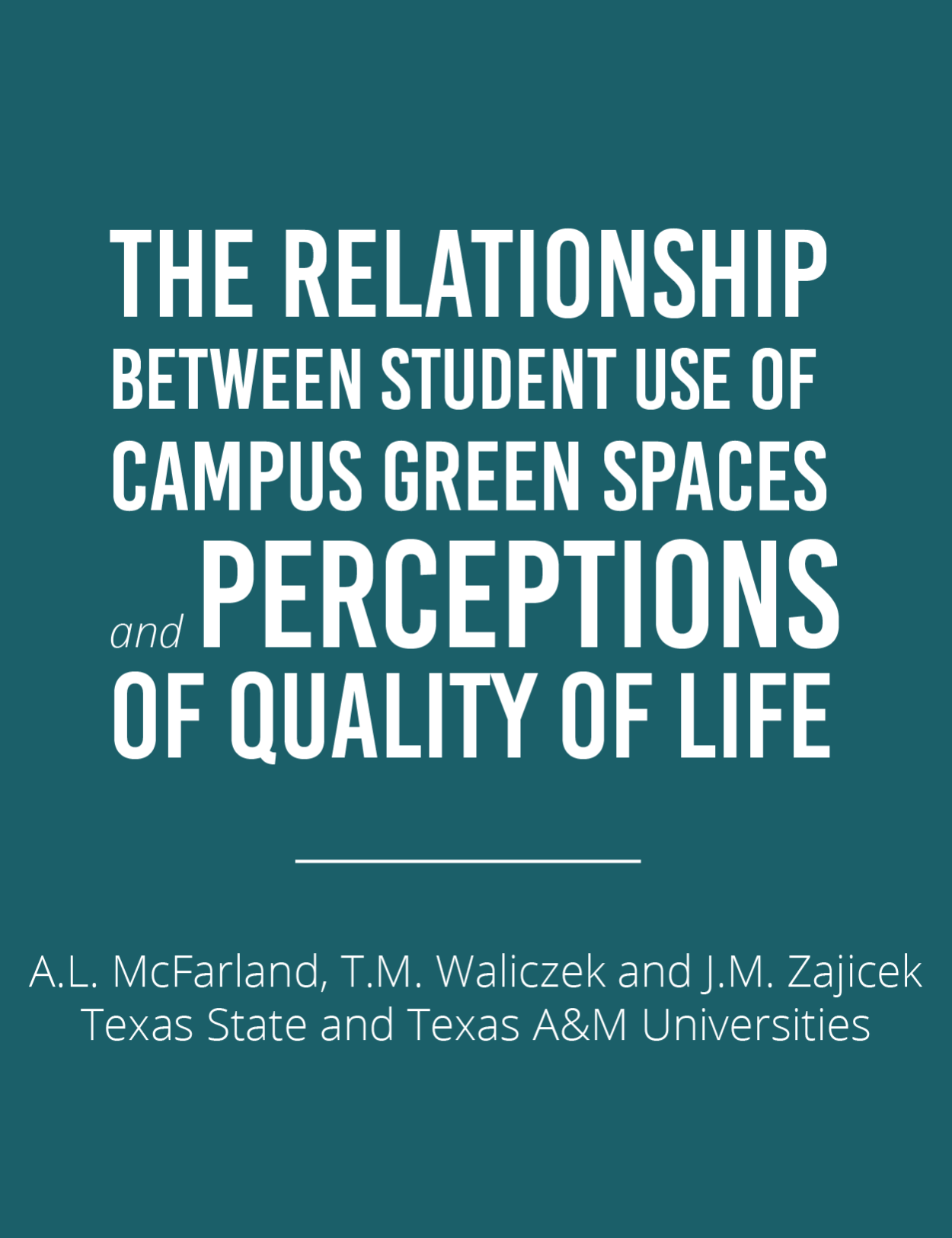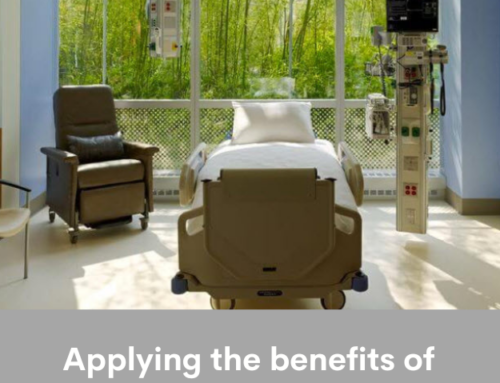Campus Green Spaces & Quality of Life

Researchers have found that students’ perception of their overall academic experience and the campus environment is related to academic accomplishment. Additionally, studies showed that the designed environment of the university can influence the degree of stress students may feel. The main objective of this study was to investigate Texas State University-San Marcos student use of campus green spaces and the arboretum and the perceptions of quality of life. Of students enrolled, 2681 (10% of the student body) were randomly selected to receive questionnaires. This selection was stratified to include all classifications: freshmen, sophomores, juniors, seniors, and graduate students. The student sample received e-mails with information regarding the incentive for participation and instructions on accessing the survey. The online survey included questions that related to student use of campus green spaces and arboretum, overall quality of life statements, an instrument to measure the quality of life of university students, as well as demographic questions. A total of 469 surveys were collected and analyzed to compare levels of quality of life of university students and the level of usage of the campus green spaces and the arboretum. Demographic information collected allowed controlling for student grade classification, age group, gender, ethnicity, marital status, work status, and commuter status. A Pearson’s Product-Moment correlation indicated a statistically significantly reverse relationship between student grade classification for undergraduate students and the Green-User scores (r=-0.212, P=0.000). Additionally, a Pearson’s Product-Moment correlation indicated statistically significant relationships between Green-User score and both overall quality of life statements (P=0.016 and P=0.001), the overall quality of life of university students score (P=0.004), the affective domain (P=0.001), the interaction with students dimension of the affective domain (P=0.000), the total positive affective dimension of the affective domain (P=0.003), and the functional dimension of the cognitive domain (P=0.024) for undergraduate students. Statistically significant differences were not found on the cognitive domain, the interaction with professors dimension of the affective domain, or the structural dimension of the cognitive domain. Results help to justify consideration of the added expense in maintaining campus green spaces in meeting the goals of the university.





